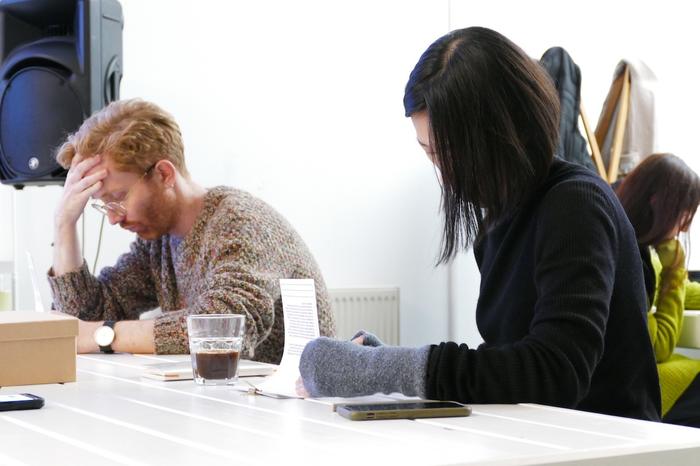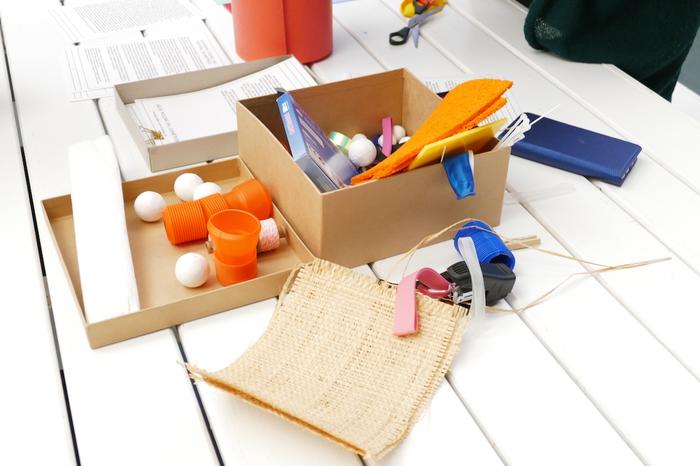Recalibrating the Emotion Filter: Workshop Procedure
Recalibrating the Emotion Filter
Image Credit: MoA
Workshop Procedure
Image Credit: MoA
Workshop Procedure
Image Credit: MoA
After a short contextualization of the topic at hand, Katrin Glinka introduced the participants to the workshop. The participants were seated at tables in groups of no more than four. Two boxes had been placed in the middle of each table. After the introduction, we asked participants to open the first box - which contained a set of 6 cards that spelled out a scenario and a prompt - take out one set of prompt cards each, and read them in silence.
We situated the workshop's material practice in a scenario, which is described on the first few cards. The scenario depicts the beginning of a workday of a surgeon who is about to begin a minimally invasive surgery. The first part of the scenario is set during an endoscopic surgery and illustrates the situation before and during the surgery, including stress, failures, emotionally challenging miscommunications and how the surgeon solves these situations together with the team. The second part of the scenario describes the same situation - however, in this case in the context of a Robotic-assisted surgery. By contrasting these two condensed descriptions of the same situation in a scenario, we aimed at illustrating the 'emotion filter effect' of RAS. The next card then situated the scenario in the context of filtering and current research findings on the role of emotions in the operating room and the effect of RAS. This card also included the prompt for the participants: they were tasked to build a »Magic Emotion Filtering Machine« and specify how the machine is calibrated: Is it designed to amplify emotions? Is it designed to enhance the emotional spectrum? Or is it designed to control or mute emotions?



